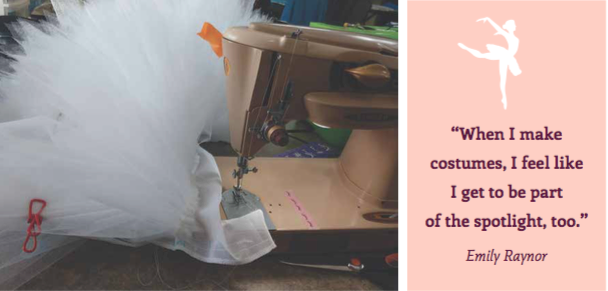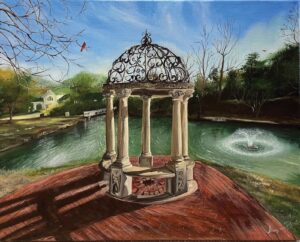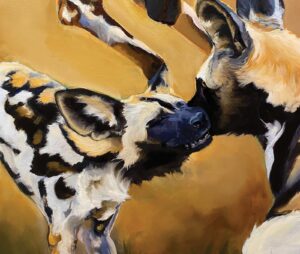As students head back to school, one Aiken mom is leaving the classroom for her sewing room. Costume designer Emily Raynor recently completed a week-long seminar to learn how to create one-of-a-kind tutus and improve her costuming skills at Tutu School.
“It was great to be with so many people who love to sew,” said Raynor. The author of the sewing pattern was there to answer questions and give her insights from years of sewing. “The ruffling technique I learned will make a world of difference,” said Raynor.
Every little girl in dance class dreams of wearing a tutu, but when did it first appear? Marie Taglioni, the Swedish Ballerina, took to the stage at the Paris Opera in 1832, wearing a skirt scandalously cut to show her ankles. Designed by Eugene Lami and made from 30 yards of tulle, net and tarlatan, the bell-shaped design was dubbed “the Romantic” for its elegant sway. From the late 19th century onward, tutus steadily shortened, for ease of movement and to show off dancers’ legs. Today, tutus are no longer restricted to the stage, as millions watched Serena Williams play in the 2018 U.S. Open Tennis Tournament in an asymmetrical, tutu-style dress.
Mystical and the epitome of grace, not to mention the icon of ballet, modern tutus transform ballerinas into black swans and sleeping beauties. Tutus are detailed to the extreme and customized to every sequin because they tell the audience what role or character the dancer is playing.
The anatomy of a tutu includes the bodice, the Basque (undergarment), and the frills, which are typically 12 layers of netting – 16 for extra fullness – to retain stiffness throughout movement. The process of making one is painstaking. The basic tutu, which is just the skirt, takes about 20 hours; with embellishments, it can take 40 to 60 hours. They’re expensive – $1,000-$2,000 for a teenager, or pre-professional entering competition.
“Getting netting through the machine is a wrestling match,” said Raynor. “You have to have patience, even when you must rip out and re-sew the same layer many times before you get it right. After the netting settles down for a couple of days, you go back and finish the remaining layers,” said Raynor. The finished Russian-style tutu took 50 hours to complete, with 16 layers of netting, some doubled, and a hand-pleated top.
Raynor is currently working on costumes for the Aiken Civic Ballet’s upcoming performance, Dracula. “I’m sewing Romantic-style tutus for the waltz scene. Not as complicated, but these must flow. I’m not a performer, but always wanted to be a dancer. When I make costumes, I feel like I get to be part of the spotlight, too,” said Raynor.
The Aiken Civic Ballet will perform Dracula on October 18 and 19 at 7 p.m.; and The Nutcracker, December 20
at 7 p.m.; December 21, 2 p.m.; and December 22, 2 p.m., at the USCA Etherredge Center. For tickets, call
(803) 641-3305. Visit www.aikenballet.org for patron and business sponsorship information.

Did You Know?
Here’s some tutu trivia to know before you go to the ballet.
There are five types of tutus:
- The Bell – Short, stiff, no hoop, falls in a bell shape; one of the classical tutus, represented by Degas paintings.
- The Russian Pancake – The second classical tutu, it stands straight out from the hips, supported by embedded wire hoop.
- The Platter – Akin to the Pancake, this tutu’s top layer is flat and decorated, with no pleats.
- The Powder – puff or Balanchine tutu Short tutu, soft and full, no hoop.
- The Romantic – Long, flowing tulle skirt, midcalf length.


by Susie Ferrara
A native of Aiken, Susie studied under the direction of Carl Crosby and is a former member of the Aiken Civic Ballet Company. She also danced with the University of South Carolina Dance Company, under the direction Susan Anderson, and the Robert Ivey Ballet Company in Charleston, SC. She has 30 years of experience in Communications and Journalism, and currently works in the Site Training Department at the Savannah River Site.
























